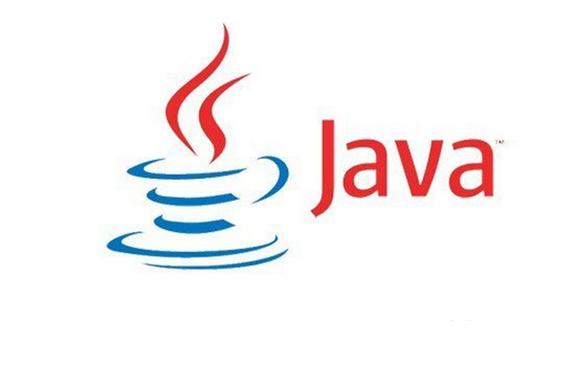
在使用 Spring Boot 的时候,都要涉及到服务的停止和启动,当我们停止服务的时候,很多时候大家都是 kill -9 直接把程序进程杀掉,这样程序不会执行优雅的关闭。而且一些没有执行完的程序就会直接退出。
我们很多时候都需要安全的将服务停止,也就是把没有处理完的工作继续处理完成。比如停止一些依赖的服务,输出一些日志,发一些信号给其他的应用系统,这个在保证系统的高可用是非常有必要的。那么咱么就来看一下几种停止 Spring Boot 的方法。
第一种就是 Spring Boot 提供的 actuator 的功能,它可以执行 shutdown, health, info 等,默认情况下,actuator 的 shutdown 是 disable 的,我们需要打开它,首先引入 acturator 的 maven 依赖。
<dependency>
<groupId>org.springframework.bootgroupId>
<artifactId>spring-boot-starter-actuatorartifactId>
dependency>
然后将 shutdown 节点打开,也将 /actuator/shutdown 暴露 web 访问也设置上,除了 shutdown 之外还有 health, info 的 web 访问都打开的话将 management.endpoints.web.exposure.include=* 就可以。将如下配置设置到 application.properties 里边,设置一下服务的端口号为 3333。
server.port=3333
management.endpoint.shutdown.enabled=true
management.endpoints.web.exposure.include=shutdown
接下来,咱们创建一个 Spring Boot 工程,然后设置一个 bean 对象,配置上 PreDestroy 方法。这样在停止的时候会打印语句。bean 的整个生命周期分为创建、初始化、销毁,当最后关闭的时候会执行销毁操作,在销毁的方法中执行一条输出日志。
package com.hqs.springboot.shutdowndemo.bean;
import javax.annotation.PreDestroy;
/**
* @author huangqingshi
* @Date 2019-08-17
*/
public class TerminateBean {
@PreDestroy
public void preDestroy() {
System.out.println("TerminalBean is destroyed");
}
}
做一个 configuration,然后提供一个获取 bean 的方法,这样该 bean 对象会被初始化。
package com.hqs.springboot.shutdowndemo.config;
import com.hqs.springboot.shutdowndemo.bean.TerminateBean;
import org.springframework.context.annotation.Bean;
import org.springframework.context.annotation.Configuration;
/**
* @author huangqingshi
* @Date 2019-08-17
*/
@Configuration
public class ShutDownConfig {
@Bean
public TerminateBean getTerminateBean() {
return new TerminateBean();
}
}
在启动类里边输出一个启动日志,当工程启动的时候,会看到启动的输出,接下来咱们执行停止命令。
curl -X POST http://localhost:3333/actuator/shutdown
以下日志可以输出启动时的日志打印和停止时的日志打印,同时程序已经停止,是不是比较神奇。
第二种方法也比较简单,获取程序启动时候的 context,然后关闭主程序启动时的 context。这样程序在关闭的时候也会调用 PreDestroy 注解,如下方法在程序启动十秒后进行关闭。
/* method 2: use ctx.close to shutdown all application context */
ConfigurableApplicationContext ctx = SpringApplication.run(ShutdowndemoApplication.class, args);
try {
TimeUnit.SECONDS.sleep(10);
} catch (InterruptedException e) {
e.printStackTrace();
}
ctx.close();
第三种方法,在 Spring Boot 启动的时候将进程号写入一个 app.pid 文件,生成的路径是可以指定的,可以通过命令 cat /Users/huangqingshi/app.id | xargs kill 命令直接停止服务,这个时候 bean 对象的 PreDestroy 方法也会调用的。这种方法大家使用的比较普遍。写一个 start.sh 用于启动 Spring Boot 程序,然后写一个停止程序将服务停止。
/* method 3 : generate a pid in a specified path, while use command to shutdown pid :
'cat /Users/huangqingshi/app.pid | xargs kill' */
SpringApplication application = new SpringApplication(ShutdowndemoApplication.class);
application.addListeners(new ApplicationPidFileWriter("/Users/huangqingshi/app.pid"));
application.run();
第四种方法,通过调用一个 SpringApplication.exit() 方法也可以退出程序,同时将生成一个退出码,这个退出码可以传递给所有的 context。
这个就是一个 JVM 的钩子,通过调用这个方法的话会把所有 PreDestroy 的方法执行并停止,并且传递给具体的退出码给所有 Context。通过调用 System.exit(exitCode) 可以将这个错误码也传给 JVM。程序执行完后最后会输出:Process finished with exit code 0,给 JVM 一个 SIGNAL。
/* method 4: exit this application using static method */
ConfigurableApplicationContext ctx = SpringApplication.run(ShutdowndemoApplication.class, args);
exitApplication(ctx);
public static void exitApplication(ConfigurableApplicationContext context) {
int exitCode = SpringApplication.exit(context, (ExitCodeGenerator) () -> 0);
System.exit(exitCode);
}
第五种方法,自己写一个 Controller,然后将自己写好的 Controller 获取到程序的 context,然后调用自己配置的 Controller 方法退出程序。
通过调用自己写的 /shutDownContext 方法关闭程序:curl -X POST http://localhost:3333/shutDownContext。
package com.hqs.springboot.shutdowndemo.controller;
import org.springframework.beans.BeansException;
import org.springframework.context.ApplicationContext;
import org.springframework.context.ApplicationContextAware;
import org.springframework.context.ConfigurableApplicationContext;
import org.springframework.web.bind.annotation.GetMapping;
import org.springframework.web.bind.annotation.PostMapping;
import org.springframework.web.bind.annotation.RestController;
/**
* @author huangqingshi
* @Date 2019-08-17
*/
@RestController
public class ShutDownController implements ApplicationContextAware {
private ApplicationContext context;
@PostMapping("/shutDownContext")
public String shutDownContext() {
ConfigurableApplicationContext ctx = (ConfigurableApplicationContext) context;
ctx.close();
return "context is shutdown";
}
@GetMapping("/")
public String getIndex() {
return "OK";
}
@Override
public void setApplicationContext(ApplicationContext applicationContext) throws BeansException {
context = applicationContext;
}
}
好了,Spring Boot 的优雅关闭方法也都实现好了,也有同学问,如何暴力停止呢,简单,直接 kill -9 相应的 PID 即可。
总结
以上这几种方法实现的话比较简单,但是真实工作中还需要考虑的点还很多,比如需要保护暴露的点不被别人利用,一般要加一些防火墙,或者只在内网使用,保证程序安全。
在真实的工作中的时候第三种比较常用,程序中一般使用内存队列或线程池的时候最好要优雅的关机,将内存队列没有处理的保存起来或线程池中没处理完的程序处理完。但是因为停机的时候比较快,所以停服务的时候最好不要处理大量的数据操作,这样会影响程序停止。
所谓技多不压身,我们所读过的每一本书,所学过的每一门语言,在未来指不定都能给我们意想不到的回馈呢。其实做为一个开发者,有一个学习的氛围跟一个交流圈子特别重要这里我推荐一个Java学习交流群私信小编回复JAVA获得进群资料,不管你是小白还是大牛欢迎入驻,大家一起交流成长。

)

模型简介)

——查询模式之检测异常)








)




